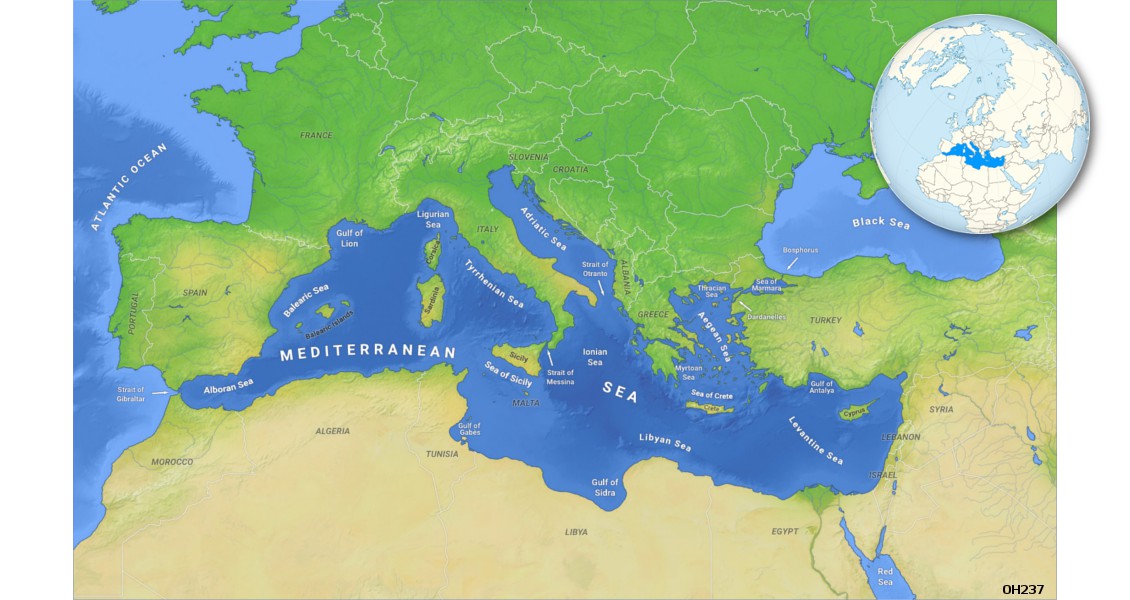Intense, mainly shallow water exploration activity in the Central and Western Mediterranean Sea during the last two decades of the 20th century led to the discovery of some important oil and gas fields, with gas (mostly biogenic) found mainly in the deepwater deposits such as turbidites and oil in carbonate units that span in age from Triassic to Miocene. In the early 21st century, exploration tapered off, but in recent years the changing political landscape in North Africa, coupled with innovative new technologies, has resulted in explorers renewing their interest in the area.
Dominated by Thrust Belts
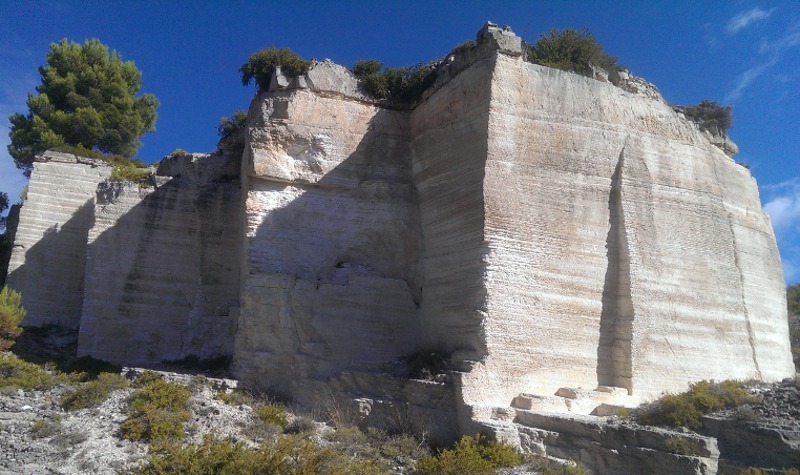 Basinal carbonate turbidites of the Mt Acuto Fm (Gargano Promontory, Southern Italy). (Source: GEPlan Consulting)The Western and Central Mediterranean area is geologically very complex because it is characterised by a combination of rifting systems surrounded by thrust belt systems, which have had a very dominant influence on the petroleum potential of the region and which still impact on it to this day. Several Neogene rifting systems are found in the Western Mediterranean between Spain, France and Italy, which is surrounded by the Atlas, Apennine, Pyrenean and Alps fold and thrust belt systems, while further east the Neogene extensional basin centred on the Greek islands is similarly encircled by the thrusts of the Anatolian plate.
Basinal carbonate turbidites of the Mt Acuto Fm (Gargano Promontory, Southern Italy). (Source: GEPlan Consulting)The Western and Central Mediterranean area is geologically very complex because it is characterised by a combination of rifting systems surrounded by thrust belt systems, which have had a very dominant influence on the petroleum potential of the region and which still impact on it to this day. Several Neogene rifting systems are found in the Western Mediterranean between Spain, France and Italy, which is surrounded by the Atlas, Apennine, Pyrenean and Alps fold and thrust belt systems, while further east the Neogene extensional basin centred on the Greek islands is similarly encircled by the thrusts of the Anatolian plate.
Back in the Lower Jurassic, however, this area lay on the western edge of the Neo-Tethys in an area of shallow water deposition, mainly consisting of carbonates. At this time a first, well-extended rifting stage started, which controlled the deposition of potential source rock deposits. This stage lasted for different lengths of time across the basin but there is evidence that it continued discontinuously until the end of the Cretaceous. The first effects of the collision between Africa and Europe are recorded in Early Tertiary sequences. By the Miocene the Central and Western Mediterranean area had taken on more of its present shape.
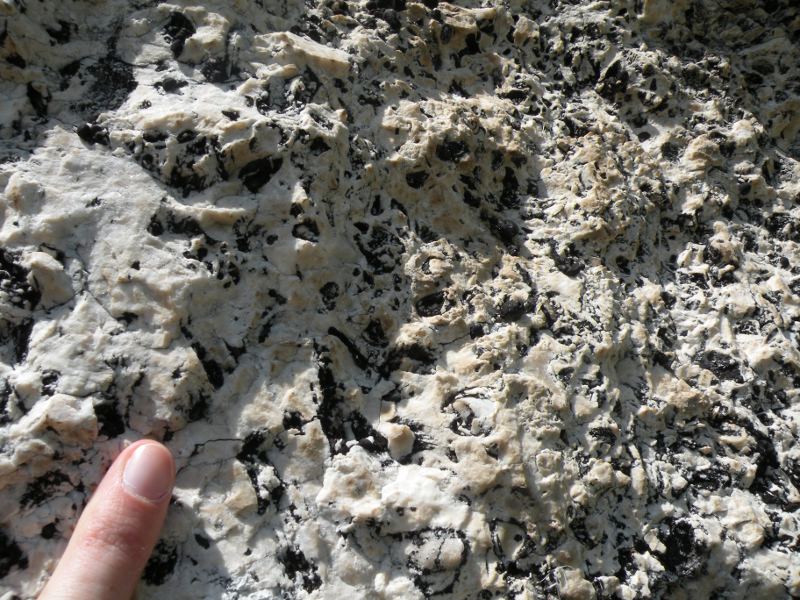 An outcrop in Southern Italy with rudist-rich resedimented carbonates stained with oil in mouldic and fracture porosity. (Source: R Di Cuia)Comparing the stratigraphic successions of the different basins of the Central and Western Mediterranean Sea, it is evident that the entire Mesozoic interval is predominantly characterised by carbonate units while the Tertiary sequences are more lithologically heterogeneous, even if carbonate rocks are still abundant.
An outcrop in Southern Italy with rudist-rich resedimented carbonates stained with oil in mouldic and fracture porosity. (Source: R Di Cuia)Comparing the stratigraphic successions of the different basins of the Central and Western Mediterranean Sea, it is evident that the entire Mesozoic interval is predominantly characterised by carbonate units while the Tertiary sequences are more lithologically heterogeneous, even if carbonate rocks are still abundant.
As a result, hydrocarbons have been discovered in carbonate lithologies in this area in units that are from Triassic to Miocene in age, but in many cases the real potential of these carbonate units is still to be understood. By looking at the previous carbonate discoveries with new ‘eyes’ and with the use of innovative technologies available to the modern explorer, it could be possible to delineate the key characteristics of carbonate fields, identify errors made in the past and learn and extrapolate from them.
Lessons from Exploration
In the ‘Hotspot’ map and text below we review the main carbonate discoveries in the Central and Western Mediterranean Sea, identifying the chief characteristics of the reservoirs, and discuss how each discovery can be used to learn specific technical aspects for exploration activity targeting similar reservoirs in the future.









An Integrated Approach
By looking at the lessons learnt from these discoveries in an integrated rather than individual manner, it is possible to develop a different approach to carbonate plays in the Western and Central Mediterranean. Analysis of the main geological domains and the identification of key characteristics have identified several target play types.
Proximal to distal basinal carbonate play: This play is characterised by proximal to distal resedimented shallow water carbonate reservoirs deposited in a basin in front of a fault-controlled platform margin, in high-relief platform to basin transition environments. In most cases the source is nearby and the seal is ensured by very fine-grained carbonate and clastic deepwater hemipelagic deposits.
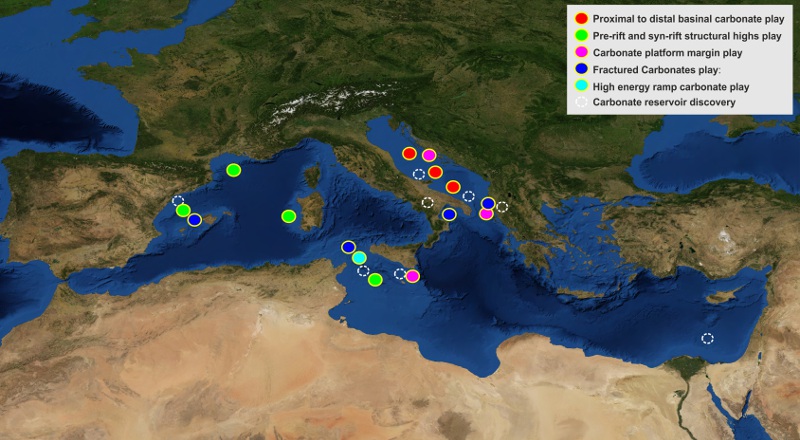 Revisited exploration plays. (Source: NASA Earth Observatory)The traps could be pinch-outs of turbidite flows in distal depositional environments or against structural highs that stop the flows. This type of play can be expected in the Adriatic and Ionian Basins and possibly on the western Sardinia margin and in the Valencia Basin. The Aquila field is an analogue, and for outcrop analogues there are mega-breccias and turbidites in the Maiella Mountains of central Italy.
Revisited exploration plays. (Source: NASA Earth Observatory)The traps could be pinch-outs of turbidite flows in distal depositional environments or against structural highs that stop the flows. This type of play can be expected in the Adriatic and Ionian Basins and possibly on the western Sardinia margin and in the Valencia Basin. The Aquila field is an analogue, and for outcrop analogues there are mega-breccias and turbidites in the Maiella Mountains of central Italy.
Isolated platforms play: Characterised by high-relief isolated carbonate platforms surrounded by basinal deposits, this play is concentrated in the Eastern Mediterranean where Zohr is the first discovery. Reservoirs are karstified shallow water carbonates, sealed by evaporites or fine-grained clastics. Source rocks could be located within the basinal deposits or infills, with lateral migration of hydrocarbons.
Pre-rift and syn-rift structural highs play: Erosion of the top of carbonate platforms and tilted blocks as a result of a rifting event characterises this play. Reservoirs are karstified shallow water carbonates or carbonate reefs on tilted blocks, sealed by post-rift sequences, and source rock could be represented by syn-rift deposits. The distribution of the play is associated with Tertiary rifting areas such as the Maltese and Pantelleria grabens and Western Mediterranean basins. The most typical analogues are found in the Valencian Trough, including the Amposta Marino and Casablanca Fields.
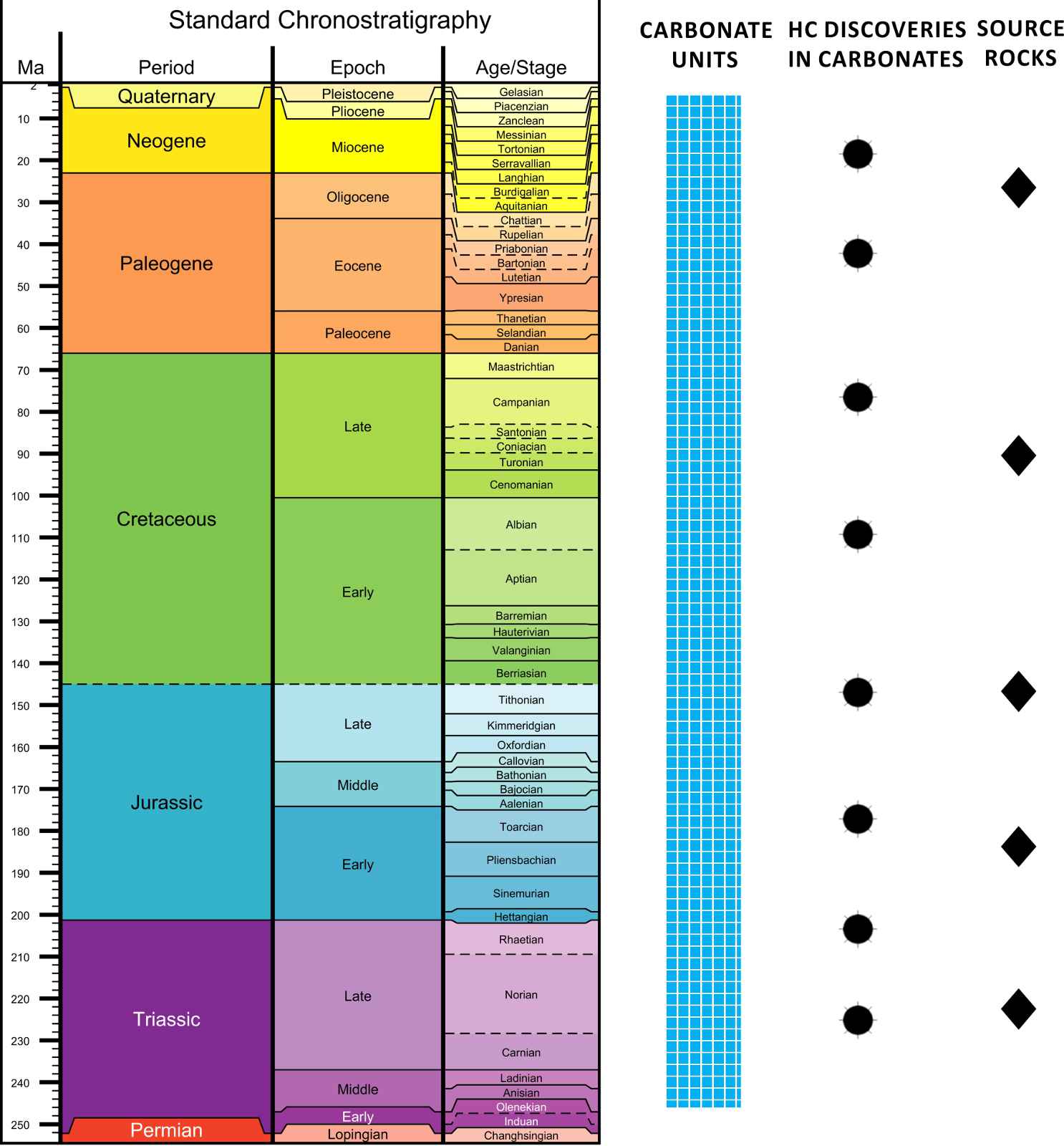 Mediterranean carbonate related hydrocarbon occurrences with reference to the Geological Timescale.Carbonate platform margin play: This play occurs on high points along Mesozoic and Cenozoic carbonate platform margins. The reservoir is made of shallow water carbonates that can be affected by karst and dolomitisation and which are overlain by Tertiary fine-grained clastics. Reservoir properties, heterogeneity and source rock distribution could be the main uncertainties related to this play type. It is expected to be present along the carbonate platform margins bounding the Adriatic and Ionian Basins and the Sicily/Malta channel. A good analogue would be the Vega field.
Mediterranean carbonate related hydrocarbon occurrences with reference to the Geological Timescale.Carbonate platform margin play: This play occurs on high points along Mesozoic and Cenozoic carbonate platform margins. The reservoir is made of shallow water carbonates that can be affected by karst and dolomitisation and which are overlain by Tertiary fine-grained clastics. Reservoir properties, heterogeneity and source rock distribution could be the main uncertainties related to this play type. It is expected to be present along the carbonate platform margins bounding the Adriatic and Ionian Basins and the Sicily/Malta channel. A good analogue would be the Vega field.
High energy ramp carbonate play: Between the Mesozoic and the Tertiary the depositional environment changed from low to high energy, resulting in low angle carbonate ramps, the key characteristic of this play. Fields are expected to be located in the southern Adriatic and Ionian Basins, the Malta Channel, western Sicily and the Tunisia Basin. Analogues can be found in the Nilde and Didon fields and around the Maiella Mountains. Outcrop examples show increased porosity due to the high energy depositional environment.
Fractured carbonates in thrust belt Settings: The main characteristic of this play is that the fault and fracture network controls the hydrocarbon potential and productivity of the tight, shallow to deep water, carbonate reservoirs. Traps are mainly structural, including 4-way dip closure or fault-bounded anticlines, and the seal is given by Tertiary clastic foredeep deposits. Source rocks may vary according to the location and the type of depositional settings of the reservoir rocks. This play can be found in most of the thrust belts surrounding the Mediterranean Sea, in the Adriatic Basin (both sides), the Ionian Basin, on the north-west side of the Sicily Channel and on the southern part of the Valencia Basin.
New Perspectives
Carbonates have been proven to be one of the most prolific plays in the Central and Western Mediterranean region, and several large hydrocarbon discoveries have been made in carbonate reservoirs exhibiting varying characteristics. A review of the previous discoveries and an understanding of their main characteristics, together with a regional to basin scale geological understating of the depositional and stratigraphic settings, highlights the fact that in the Central and Western Mediterranean Sea there still exists the potential for large hydrocarbon accumulations in different types of carbonate reservoirs. The acquisition of seismic with new technologies will reduce the exploration risks.


